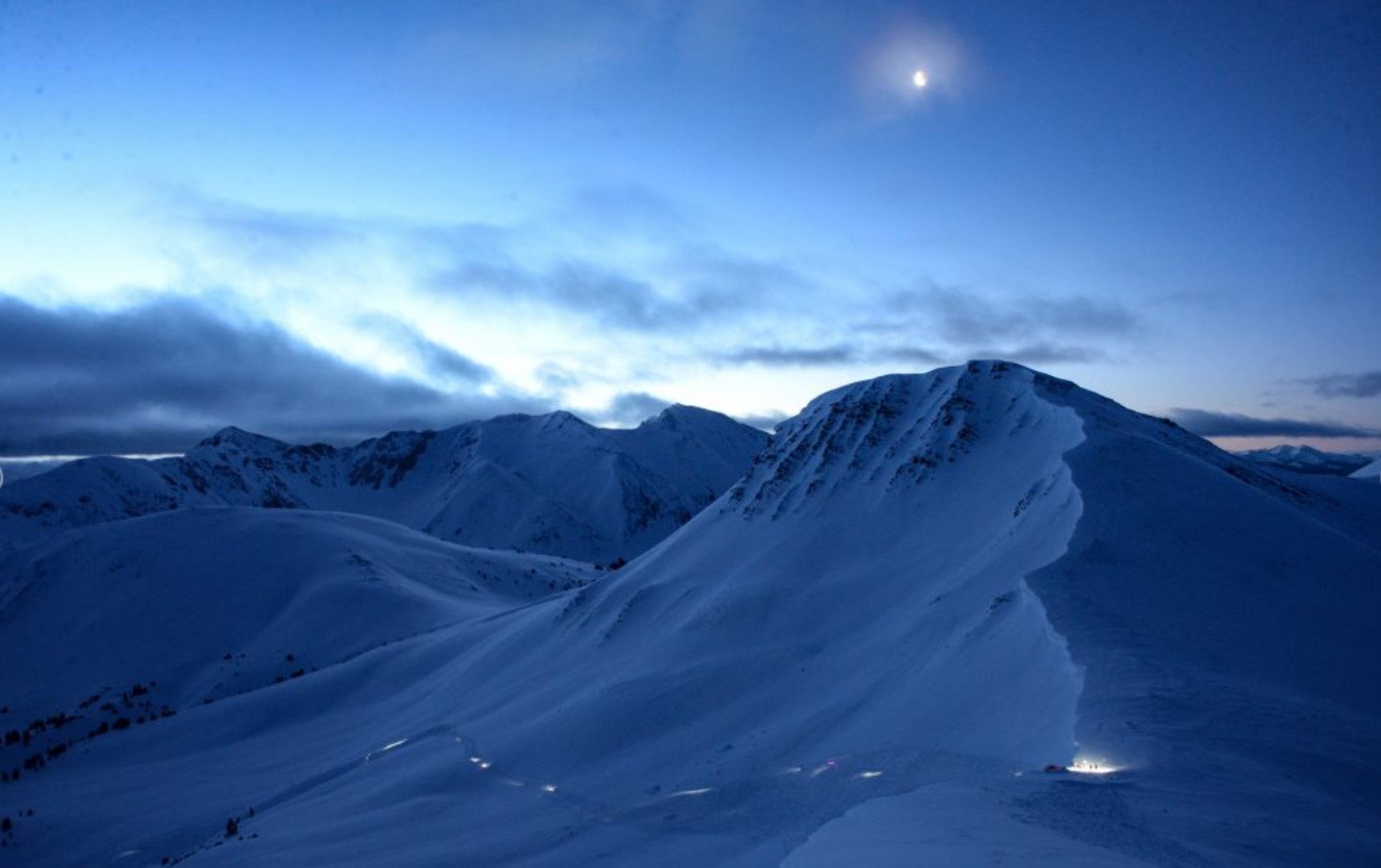EXPANDING THE SCOPE OF RACE-SPECIFIC PREPARATION
Written by: Coach Nikki LaRochelle
As athletes with race goals or big efforts on the horizon, there is always low-hanging fruit to benefit from if we deliberately choose to focus on comprehensive training and preparation. One consideration I often see overlooked is curating one’s training to the goal effort at hand. By this, I’m not only referring to considerations like length and vertical, but more specific details like the terrain, predicted speed, temperature, snow conditions, kit, gear, and beyond.
I’d like to reference skimo racing as an example. Most skimo races in the United States take place at ski areas. As such, they generally include groomed piste, particularly on the climbs. If you’re a person who gets up every morning to train at your local ski area by skinning up groomers, your training will likely be decently suited for these types of races. There are however, other skimo races that don’t take place on-piste, and for the sake of this article, I’d like to focus on the Grand Traverse. I would be remiss if I didn’t briefly mention the defunct Crested Butte Irwin Skimo race that was all off-piste and absolutely glorious. I wish someone could bring this race back. I’ll keep praying to the skimo gods for its revival.
The Grand Traverse in Colorado is a 40-mile, point-to-point ski mountaineering race that starts in Crested Butte and ends in Aspen. It’s almost exclusively on backcountry terrain, save a few miles of ski area at the beginning and end of the course. The total vert is about 8,000 feet. This amount of vertical over 40 miles is not that much. Relative to its race counterparts, it’s a very flat course. So, if you’re that person mentioned earlier who trains at your local ski area by skinning up groomers, your training will not be well suited for the GT! Sure, you’ll be fit, but there’s far better race-specific training than just climbing and descending runs at the ski area. The more one investigates the Grand Traverse by talking with veterans (always worth doing) they’ll soon discover this sucker is decently involved. Yes, as mentioned, the course is flat. The race is also at the end of March, which means racers are contending with a spring snowpack. This could mean bone-dry stretches, requiring racers to take off their skis and travel by foot, or it could mean a freak storm the day before, rendering a course covered in powder. It can also mean beautiful, supportable, skate-able crust or horrible, soul-sucking breakable crust. No one knows what it will be like until they’re out there. Oh, did I mention it starts at midnight? How does your gut do consuming calories at 3am? Not well? Yeah, me neither!

I understand most race endeavors may not be as complicated as the Grand Traverse. Still, if you start thinking about optimizing other arenas of the race besides your fitness, it can provide easy gains for your overall experience. My athletes racing the GT engage in a number of strategies that will help ensure success and I’ll highlight a few here. First, they practice flat skinning, which is a different stress and modality than ascending a steep hill. This also helps to break in the bottoms of their feet as a way to prevent race night blisters. Athletes also practice double poling, which is a technique rarely used in traditional skimo races but one that may be handy and highly efficient on segments of the GT course. Training at night is another training strategy; not only to grow more accustomed to skiing in the dark but also to make efforts towards training the gut to consume fuel in the wee hours of the morning. Skate skiing is another modality that can come in handy, especially if one finds themselves on well consolidated, supportable crust. Another strategy is training with a heavy pack because the required gear for the traverse is relatively extensive and athletes need to get used to training with weight on their back. Skiing down shitty snow is prudent practice because the course is not on groomed piste and athletes may be on that horrendous breakable crust I mentioned earlier. Running is also smart because, as I also mentioned earlier, if it’s a low snow year, athletes could be running many miles and we don’t want these to be their first miles of the year. Upper body strength is important for the modalities and techniques I mentioned earlier like skate skiing and double poling. Making sure to review the course is essential, especially for the traverse which is at night. Finally, training with your partner is a wise move. The GT is a team’s race and partner dynamics should never be overlooked or underestimated. These are just some examples of ways to help ensure success in a race like the traverse. These strategies require racers to step out of a formulaic training plan and trust that there’s more to this than having a world-class cardiovascular system.
When thinking about your next objective, can you identify considerations to prepare for beyond fitness? Do you have a fueling strategy? Do you have a general sense of the weather and temperature ranges? Do you know what shoes you’d like to wear or pack you’d like to carry? If you anticipate hiking during your running race, have you been hiking as a part of your training? Have you considered downhill intervals on rocky terrain if your race has long, technical descents? When we broaden the scope of preparation considerations, endless possibilities are open to us to improve our bottom line. Some of these require no sweat equity whatsoever, just the ability to think ahead, experiment and plan.
One might think Scott Johnston is very structured in his training approach, and he certainly can be. But if there is anything I’ve learned from Scott, it’s that you shouldn’t shy away from experimenting. I’m talking to you, my fellow type-A people! Layering experimentation on top of a very strong understanding of training methodology is one way Scott set himself apart as a world-renown expert and coach. He wasn’t afraid to try something new, even if he failed. So, get creative! Try different methodologies to prep for your race. Retrofit your backpack to make it work for you. Grab a cup of coffee and spend 30 minutes on Google Earth, poking around your race course to get a better sense of the profile. Practice your plan for aid stations and share your priorities with your crew. Fiddle around with different race kit options and see what works the best. Try poles. Try no poles. If you’re feeling good, push that last descent on your long run (even if your coach insists you stay in Z2). And, of course, think ahead! This is the whole point of this article. Consider how to prepare for your race beyond your fitness and make a robust, well thought out list. Then you can savor the immense satisfaction of checking items off as you thoughtfully prepare for race day.
You may not think planning is cool. Perhaps it’s cooler to throw caution to the wind. But being cool is overrated. Being prepared is where it’s at. Don’t let all that training go to waste with silly and avoidable mistakes. Harvest that low-hanging fruit and have your best race result yet. Evoke Endurance is rooting for you!




